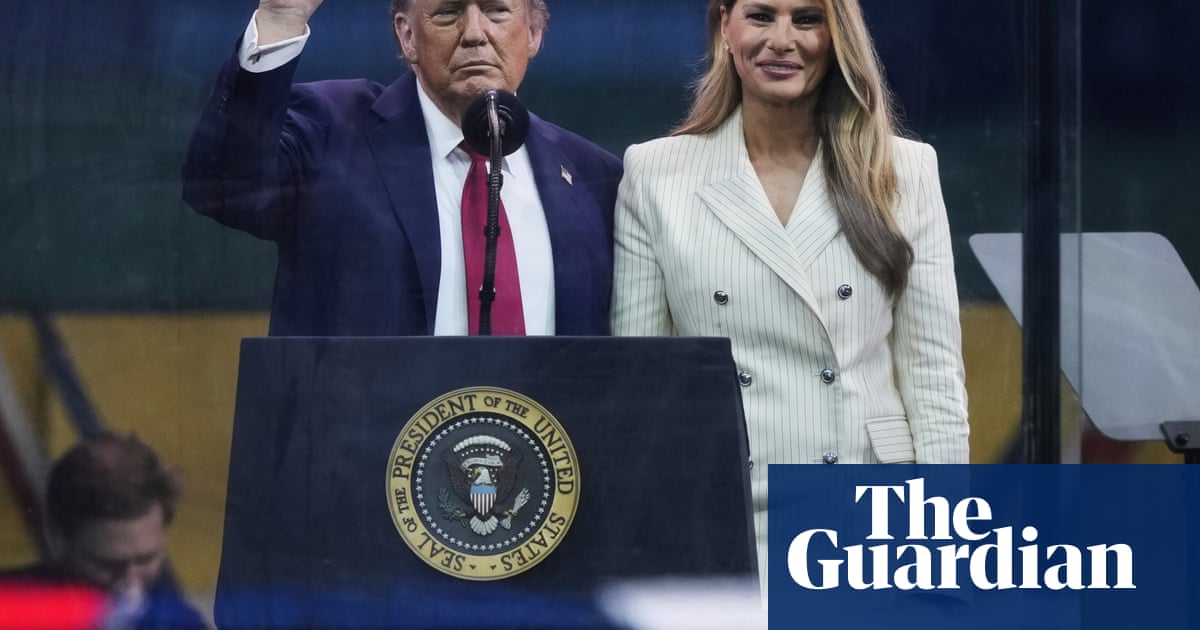Trump’s Military Parade: A Reflection of Present-Day America
It may have been billed as a military parade celebrating the American military’s storied past, yet the event spoke volumes about the nation’s present and future under Donald Trump. Soldiers, tanks, and even robotic canines marched along Constitution Avenue on a day that has now become a significant chapter in American political theater.
The Grand Spectacle
On a Saturday that felt electrified with anticipation, the first major military parade in Washington, D.C., since the Gulf War in 1991 unfolded. Paratroopers descended from the skies while military aircraft roared overhead, creating a vibrancy that resonated with both supporters and critics alike. As the weather turned ominous, those gathered could sense that the spectacle was more than just a commemoration; it was a personal ambition coming to fruition for a president who had long envisioned such an occasion.
A Birthday Bash or A Political Event?
Intriguingly, some observers couldn’t help but notice that this was also a subtle nod to Trump’s 79th birthday. Standing beneath darkening clouds, the president appeared elated, relishing the culmination of his eight-year-long dream that had finally become a reality. Promoted through a fundraising email, the march became a reflection of his own narrative—empowering, nationalistic, and undeniably personal.
"Trump’s Parade"
The event rapidly transitioned into what many labeled “Trump’s Parade.” Voices in the crowd echoed sentiments such as “This could only happen under President Trump,” encapsulating the admiration and fervor of his base. Families enjoyed the unique opportunity to climb aboard Army helicopters and armament, similar to spectacles in authoritarian regimes where militarized pride takes center stage. The lines between nationalism and militarism appeared blurred, as America’s military presence stood not only for strength but also served as a backdrop for Trump’s political branding.
Controversial Military Deployment
The timing of this grand display dovetailed with ongoing contentious issues, particularly the deployment of hundreds of Marines to Los Angeles. Critics argued that the parade was an attempt to divert attention from serious legal and ethical issues surrounding the use of military force domestically. Ironically, while the Trump administration aspired to downsize America’s military footprint overseas, such displays could elicit concerns about the militarization of law enforcement at home.
Ambitions for a Second Term
For Trump, the parade was more than a display of military prowess; it was a signal of his ambitions for a potential second term. With a price tag reportedly reaching $90 million, the event represented not merely a celebration but a willingness to depict America’s military might boldly, unfettered by fears of draconian comparisons to authoritarian leaders who typically showcase their military strength.
The Dichotomy of Military Presence
Amidst the fanfare, Trump addressed these contradictions. Having campaigned on promises to end foreign wars, the event juxtaposed that narrative with a powerful domestic display of strength. JD Vance, a prominent voice in the administration, emphasized respect for American servicemen and women during the parade, indicating the administration’s conflicting stances regarding military engagement.
A Long-Standing Dream
Trump’s fascination with military parades traces back to his experience watching the French Bastille Day celebrations in 2017. His admiration for that event planted the seeds for what transpired on that Saturday evening—a longing to replicate the grandeur of military prowess on American soil. The overt pomp and circumstance were met with mixed reviews, with some observers noting the outdated nature of certain military vehicles, yet attendees appeared captivated by the spectacle.
A National Conversation
Official responses to criticisms claimed that no one labels Emmanuel Macron a dictator for celebrating Bastille Day. The Trump administration sought to frame the event as a legitimate homage to theme of national pride rather than an emblem of authoritarianism. Trump himself alluded to the notion that America’s celebration of victories should mirror that of other nations, igniting discussions that touch upon patriotism, military history, and contemporary governance.
Historical Parallels
Militaristic parades have historical significance, often portraying national resilience and strength. Comparisons with Russia’s post-war Victory Day parades arise naturally, as such events have evolved from muted ceremonies under previous leadership to grand displays of military might reflecting geopolitical ambitions. The imagery of tanks and celebrated military history evoke not only national pride but also serve as reminders of future aspirations.
Defying Skepticism
Despite the skepticism surrounding the event and forecasts of inclement weather that threatened to dampen the evening’s enthusiasm, Trump succeeded in orchestrating a visually stunning display. The military parade, an unconventional hallmark of political bravado, left indelible impressions on both supporters and critics alike, encapsulating the complexities steering the national conversation around military, politics, and patriotism amidst an ever-evolving political landscape.


